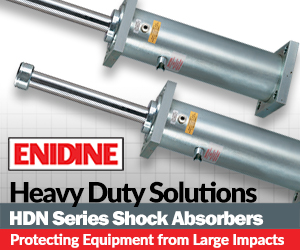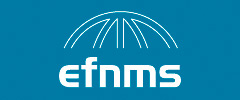Training is key for optimum scrubber performance
Leading scrubber supplier Yara Marine has always insisted that quality pays, also when it comes to training offered to engineers, deck officers, and shore staff.
The Norwegian company has delivered over 300 SOx scrubber systems to customers in all major shipping sectors, with millions of successful operating hours logged. It uses only premium corrosion-resistant alloys in its scrubbers to ensure long life. Cheaper steel corrodes much faster.
It is applying the same quality philosophy to training.
Training has traditionally been given by experts on-site when a scrubber is installed. But the process has now been formalized in a modular package offered by newly created Yara Marine Training Academy. Successive modules cover system design and function, governing documents, operation, maintenance, and troubleshooting.
- Customers can operate and maintain the scrubber system in an optimized way when they have the right knowledge and skills,” said Technical Trainer Ulf Johansson.
- Training enhances not only our in-person relationship with customers but also builds customer satisfaction in the long term.
Training can take place at customer sites, at Yara Marine’s offices in Gothenburg, or online in a virtual classroom. Modules can be tailored by the training team according to requirements. Flexibility is key.
- Our focus is on developing and offering different learning methods for different target groups in different situations, added Johansson.
Online training makes perfect use of waiting time
While Covid-19 travel restrictions remain in place, some customers are taking the opportunity to put crew members waiting onshore through online training to ensure best practice. The virtual course is currently available at a competitive price.
- It makes good sense now because crews will have to deal with any issues that arise themselves. It’s difficult for our engineers to fly out to the ship, said R&D engineer Pekka Pohjanen.
Training should be seen as an investment that will pay off in a number of ways, he says. The well-trained crew who understand the system and regulatory issues will increase the lifetime of the machinery, reduce Opex, and, crucially, lower the risk of non-compliance.
Training during installation while a ship is in drydock typically involves 2nd engineers and 3rd engineers in a very busy environment.
- They do their best to take everything in, but there are lots of other things happening at the same time, said Pohjanen. Remembering everything the training covers in those circumstances is a big ask.
Focused attention pays dividends
- The classroom setting is much better. We can walk participants through the material having their full attention, Pohjanen said. “
- We also encourage chief engineers, chief mates and even masters to do the training, so they have first-hand awareness.
Training more widely makes sense especially if the commissioning crew leaves the ship while the system is still relatively new, leaving a knowledge gap that needs to be filled.
- Targeted training also lightens the burden on the crew,” ePohjanen said.
- Environmental technology like scrubbers and ballast-water treatment means more work, he said. But it’s necessary as the industry moves to a greener base.
Most scrubbers are open-loop and pretty straightforward. “Customers do their best to follow basic maintenance procedures either from the system manual or from the ship’s PMS [Planned Maintenance System] if our recommended maintenance has been incorporated, said Pohjanen.
But classroom training is the surest way to build confidence. It also avoids the cost of getting Yara in outside its recommended biannual service visits.
The more trained crew, the better
Full functionality of the system is covered, and what to do in the rare event of a sensor failure or equipment malfunction. If those trained at commissioning move on, having other people on board who’ve done the training is obviously helpful. “Sometimes current crew can’t find the info they need in the manual. Basic training would solve that,” Pohjanen said.
Yara Marine scrubbers are built to be reliable. The system is self-monitoring and self-recording, but as a large device it typically contains some 40 sensors. “The largest systems are moving well over 1,000 m3/h of water through the ship, and as with any system it’s a challenge to maintain capacity 24/7,” said Pohjanen.
As the system is designed for continuous operation, it is essential sensors perform optimally. If non-critical alarms go unheeded, at some point there will be a critical alarm and the scrubber will eventually shut itself down. Robust training can help to prevent that scenario.
Manage concerns on compliance
Most unexpected problems that training can mitigate are to do with compliance.
- In my experience I’ve realized that crew often don’t understand the regulatory background. It’s not their job to know it in detail, but knowing the basics really helps, said Pohjanen.
Technical superintendents onshore may also not have the answers, which is a strong case for putting them through the training too.
- We present the regs for different regions in a simplified way that’s much easier to understand than the original MEPC documents, which tend to be very technical, said Pohjanen.
Training can also prevent scrubber downtime should the crew misread or misunderstand the regulations. Alarms go off automatically if the system is non-compliant or there’s a malfunction.
Correct interpretation
- Crews, of course, have the MEPC.1/Circ.883 IMO circular, which when interpreted correctly can lead to savings. Sometimes people switch to compliant fuel as the safe option. But it’s fine to continue to use HFO with the scrubber; that’s what it’s there for, Pohjanen said.
- Switching to compliant fuel through misplaced concern is a cost that can be avoided with specific training.
Conversely, there is the risk that crew do not appreciate the consequences of an alarm. The alarm may remain on and nothing is done, or there may be failure to order a spare part because the problem was not seen as critical. “The worst case is if the crew has been unaware the ship is out of compliance, which could result in, for example, fines or even detention by port state control,” said Pohjanen.
Training is a ‘win-win’
In terms of low-level troubleshooting, Pohjanen says experienced crew can typically figure things out by themselves, as they are used to working with a multitude of pumps and valves. Troubleshooting in the classroom focuses on critical problems based on past cases.
- At the end of the day, additional basic training is a win-win for all parties,” Pohjanen said. “One of our customers has trained some 600 crew members. That kind of proactive approach means they get the best out of their system, they’re confident on compliance, and they can save money in the long run.






![EMR_AMS-Asset-Monitor-banner_300x600_MW[62]OCT EMR_AMS-Asset-Monitor-banner_300x600_MW[62]OCT](/var/ezwebin_site/storage/images/media/images/emr_ams-asset-monitor-banner_300x600_mw-62-oct/79406-1-eng-GB/EMR_AMS-Asset-Monitor-banner_300x600_MW-62-OCT.png)



